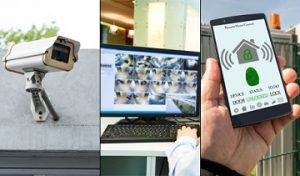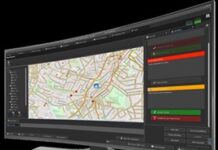
Even as the physical security market has adopted PSIM as an entirely new security category, many transformations have occurred that have caused its true definition to be misunderstood and miscategorised. However, true PSIM can be identified quite easily when you analyse the functionality and capabilities of the solution.
At its core, PSIM is an intelligent software platform which is able to convert large amounts of unorganised, unstructured data to valuable and actionable information through correlations based on time, location, duration, frequency, and type. Each company or organisation has its own set of compliance laws, standards and risk policies. Therefore, true enterprise-quality PSIM software should have the ability to connect to other systems and subsystems (i.e. access controls, devices, sensors and more) and become integrated whereby, the software enables users to focus on managing their situations and not on managing disparate technologies.
PSIM is industry-agnostic and spans a wide variety of verticals, including everything from transportation to commercial properties, public safety to large-scale events and even energy and banking. The one commonality that unites these different use cases is the need for information management. Today, data is rapidly multiplying and expanding at record pace, with over 90 percent of all data in the world having been created in the last couple of years. While there is more data than ever before, without the right tool to analyse it, track it, and make it easily understood, its value remains locked within the systems. That’s where PSIM comes in.
With so many existing security solutions in the market today, IT executives often wonder which type of platform is the best fit, and what to look for when considering a PSIM software solution. Below are key factors that one should consider when looking at PSIM software platforms.
• IT Security Integration: IT security integration gives clients the ability to go beyond situational awareness and physical security to rapidly detect threats and deploy real-time responses more holistically. Without IT integration, systems are still working in silos, which makes overall response slower and therefore less effective. There should be a strong integration between physical and IT security in order to create results-oriented collaboration and to reduce risk to organisations. A true PSIM platform should incorporate a company’s IT system and work within their compliance laws and needs.
• Mobile Accessibility: When talking about security, the ability to manage situations in real-time is crucial. A PSIM platform that works well should have the ability to enhance security for widely dispersed assets through a mobile application. First responders, senior executives and authorised IT staff should have access to actionable information from anywhere via mobile device (this could include a cell phone or tablet) for enhanced situational awareness.
• Real-Time Data Correlation: Wondering what big data has to do with security? When it comes to PSIM, it actually has to do with every aspect of identifying and addressing potential threats. PSIM uses data to identify risks and better understand company compliance standards and needs. Rather than being a data generator, the platform should filter the data and correlate it, finding valuable information through patterns and behaviour, with the goal of identifying a potential threat before it has reached fruition.
• The Power Of Social Media: In this internet and digital age, one of the best platforms to identify physical or cyber threats lies in the palm of your hand. Certain PSIM systems can actually track social media and utilise it as a security tool during major events. Through multi-language support (supporting full i18n) and integration to language deciphering applications, the program can recognise the same locations and words and phrases to see collaboration that could signal a potential threat. Situational awareness data from external sources should be included in the reporting feature so companies can see where threats are happening and the way in which they could affect business operations.
The evolution of Physical Security Information Management (PSIM) over the past ten years has been rapid and transformative. In fact, according to a recent report from marketsandmarkets.com, the global physical security market, estimated to be $65.41 billion in 2015, is expected to reach $105.26 billion by the year 2020. At the forefront of this movement are newer, faster integrated platforms that provide real-time data and highly-responsive security solutions.
Organisations considering their PSIM alternatives should be certain that the solution they choose easily integrates into existing systems, allows mobile access for better responsiveness and control, correlates data in real-time, and incorporates helpful tools such as social media and i18n to create a smart, comprehensive strategy to ensure an organisation’s efficiency through managing and mitigating risk. As organisations’ security needs change and evolve, so too should their PSIM solution. Preparing for the future today will help ensure your PSIM solution is ready to meet the challenges of tomorrow.











